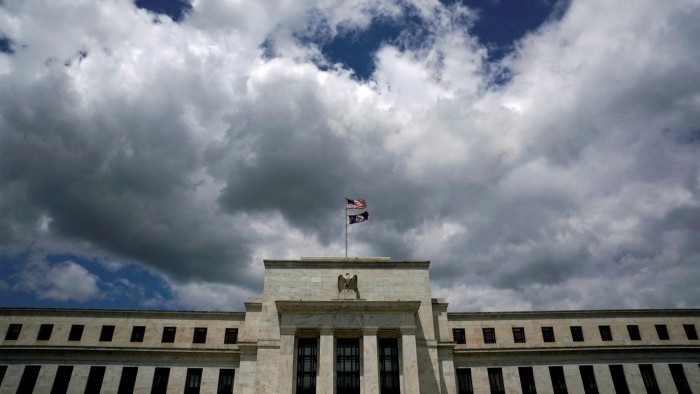The flaws in the Fed’s approach to inflation

Roula Khalaf, Editor of the FT, selects her favourite stories in this weekly newsletter.
The writer is the Alfred Lerner professor of banking and financial institutions at Columbia Business School and a former governor of the US Federal Reserve
The US Federal Reserve has been mugged by reality. Current inflation now exceeds 6 per cent, a level not seen in almost 40 years, and is proving to be far more persistent than Fed policymakers have projected. Why is Fed monetary policy behind the curve in tightening monetary policy to control inflation?
Three flaws in the Fed’s monetary policy framework have led to overly expansionary monetary policy.
First, there has not been enough focus on demand shocks. The Fed has based its view that the inflation surge would be shortlived on the extensive negative supply shocks that Covid-19 has imposed on the economy.
Although, negative supply shocks are surely one source of the surge in inflation, the Fed has not paid enough attention to very strong positive demand shocks.
Pent-up demand from households who were unable to spend during the pandemic and extraordinary expansionary fiscal policy promoted by the Biden administration have led to high demand for goods and services. It is true that inflation will be temporary when it is the result of supply bottlenecks that dissipate over time. But strong positive demand shocks result in persistent high inflation, which is what we are experiencing currently.
The second flaw is the Fed’s view of the Phillips curve, the theory that unemployment and inflation have an inverse relationship. Officials have pronounced that the Phillips curve is dead because unemployment is below its “natural rate” (where the economy is at a full employment level). That supposedly meant higher employment rates are no longer an important factor driving inflation higher.
Research that I presented with co-authors at the US Monetary Policy Forum several years ago suggests that the Phillips curve is not dead, but rather is hibernating.
A weak link between unemployment and inflation depends on the Fed taking pre-emptive strikes against rises in inflation, a policy that it has now abandoned.
Instead, the Fed has committed to keep monetary policy expansionary until full employment has been reached. A summary by the policy-setting Federal Open Market Committee of economic projections suggests this will occur at a natural rate of unemployment of around 3.5 per cent.
Unfortunately, past economic research indicates that the natural rate of unemployment is a number that is notoriously hard to estimate. Indeed, other indicators of labour market tightness, such as the high number of unfilled jobs and rising wages, hint that we have already hit full employment, so the natural rate of unemployment is above the 3.5 per cent target level.
Underestimates of the natural rate of unemployment have led to severe inflationary policy mistakes in the past: the so-called Great Inflation period of the late 1960s and 1970s is a classic example, where the Fed assumed that the natural rate of unemployment was around 4 per cent when later evidence demonstrated it was a couple of percentage points higher.
A third flaw is the Fed’s poor execution of the new “average” inflation targeting framework. The Fed’s switch to an average inflation target, where the target is a 2 per cent average over a specified horizon, say five years, is a policy I and many other economists have advocated.
However, the Fed has been unwilling to communicate the horizon for the average, which in effect makes the 2 per cent inflation target less credible. A long horizon means that inflation can stay above the 2 per cent level for a very long time without raising the average very much.
The unwillingness of the Fed to provide more information about the horizon for the average inflation target has therefore weakened the Fed’s credibility to keep inflation near 2 per cent. Inflation expectations may now become unanchored, which makes persistent high inflation a much likelier possibility.
Although US CPI inflation is highly likely to come down from its current level of 6.8 per cent as supply bottlenecks from Covid diminish, it will continue to substantially exceed the Fed’s target. The Fed needs to recognise the flaws in its monetary policy framework and return to more pre-emptive policies to control inflation. If it doesn’t, the outcome will not only be persistent inflation well above the 2 per cent objective, but eventually far higher interest rates to drive inflation back down, which will do serious harm to the economy.
Comments